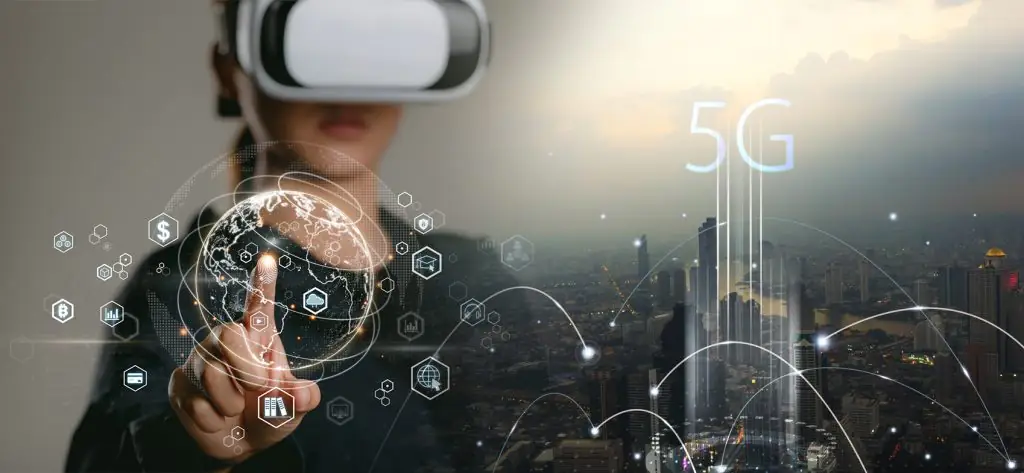The rollout of 5G technology is set to revolutionize various industries, and one of the most exciting areas of impact is Augmented Reality (AR). With its high speed, low latency, and enhanced connectivity, 5G is poised to overcome many of the limitations that have hindered the full potential of AR applications. This blog explores how 5G technology is transforming AR, highlighting key advancements and potential applications across different sectors.
One of the most significant benefits of 5G for AR applications is its ultra-low latency. Latency refers to the time it takes for data to travel from its source to its destination and back. In AR, low latency is crucial for delivering real-time experiences without lag. Traditional 4G networks can struggle to provide the near-instantaneous data transmission needed for seamless AR experiences. With 5G, latency can be reduced to as low as 1 millisecond, allowing for real-time interaction and more immersive AR applications. This improvement enhances user experiences in applications such as gaming, remote assistance, and virtual collaboration.
The increased bandwidth and faster data speeds of 5G also play a critical role in advancing AR applications. AR experiences often require the transmission of large amounts of data, including high-resolution images, 3D models, and video streams. 5G networks can handle these data demands more efficiently than 4G, enabling smoother and more detailed AR experiences. For example, in retail, customers can use AR to visualize products in their environment with greater clarity and realism, leading to better-informed purchasing decisions.
Another key advantage of 5G for AR is its ability to support a massive number of connected devices simultaneously. This capability is particularly important for AR applications in crowded environments, such as sporting events, concerts, and public spaces. With 5G, multiple users can access AR content without experiencing network congestion or degraded performance. This enhanced connectivity opens up new possibilities for shared AR experiences, where multiple users can interact with the same virtual objects and environments in real-time. For instance, at a live sports event, fans can use AR to access real-time statistics, player information, and interactive replays, enhancing their overall experience.
The combination of 5G and AR is also driving innovation in the field of remote assistance and maintenance. With 5G’s low latency and high data speeds, technicians can receive real-time AR guidance from experts located anywhere in the world. This capability is particularly valuable in industries such as manufacturing, healthcare, and aerospace, where complex and specialized tasks require expert oversight. For example, a field technician repairing an aircraft engine can use AR glasses to receive step-by-step instructions and visual overlays from a remote expert, reducing downtime and improving accuracy.
In the education sector, 5G-enabled AR is transforming the way students learn and interact with educational content. AR can bring textbooks to life by overlaying digital information onto physical pages, providing interactive and engaging learning experiences. With 5G, these AR experiences can be delivered seamlessly, allowing students to explore complex concepts in subjects such as science, history, and mathematics with greater depth and understanding. For example, students can use AR to explore the human anatomy in 3D, conduct virtual chemistry experiments, or take virtual field trips to historical sites.
Healthcare is another area where 5G and AR are making a significant impact. Surgeons can use AR to overlay critical information, such as patient data and surgical plans, onto their field of view during operations. This technology enhances precision and reduces the risk of errors. With 5G, these AR applications can be delivered with the necessary speed and reliability, even in high-stakes medical environments. Additionally, AR can be used for remote consultations, allowing doctors to diagnose and treat patients in real-time, regardless of their location. This capability is particularly valuable in rural and underserved areas, where access to specialized medical care may be limited.
The entertainment and gaming industries are also set to benefit enormously from the combination of 5G and AR. The enhanced performance of 5G networks can support more complex and immersive AR games, providing players with richer and more interactive experiences. For instance, multiplayer AR games can leverage 5G to offer seamless real-time interactions and dynamic environments. Similarly, the entertainment industry can use 5G and AR to create interactive experiences for movies, concerts, and live events, blurring the line between the physical and virtual worlds.
In the realm of smart cities, 5G and AR are contributing to the development of more efficient and connected urban environments. AR can provide real-time information and navigation assistance to residents and visitors, enhancing their experience of the city. For example, tourists can use AR apps to receive information about landmarks, find nearby amenities, and navigate public transportation systems. With 5G, these AR applications can offer reliable and responsive experiences, even in densely populated urban areas. Additionally, city planners can use AR to visualize and simulate urban development projects, improving decision-making and community engagement.
Despite the promising potential of 5G for AR applications, several challenges remain. The widespread deployment of 5G infrastructure is still in progress, and it may take time for the technology to become available in all regions. Additionally, the development of AR hardware and software that can fully leverage the capabilities of 5G is ongoing. Ensuring compatibility and interoperability between different devices and platforms is essential for delivering seamless AR experiences. Privacy and security concerns also need to be addressed, particularly in applications that involve sensitive data, such as healthcare and remote assistance.
As 5G networks continue to expand and mature, the impact on AR applications will only grow. The combination of high speed, low latency, and enhanced connectivity provided by 5G is unlocking new possibilities for AR across various industries. From gaming and entertainment to healthcare and education, 5G-enabled AR is set to transform the way we interact with digital content and the world around us. By overcoming current limitations and driving innovation, 5G is paving the way for a future where AR is seamlessly integrated into our daily lives, enhancing productivity, learning, and entertainment in unprecedented ways.
From Our Editorial Team
Our Editorial team comprises of over 15 highly motivated bunch of individuals, who work tirelessly to get the most sought after curated content for our subscribers.


